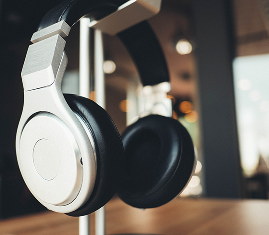So you’ve always had a deep appreciation for classical music, but lately, you’ve been yearning to understand it on a whole new level. You want to unravel the hidden intricacies that make classical music recordings so captivating. From the delicate nuances of the violin to the powerful crescendos of the orchestra, you’re ready to embark on a personal journey of exploration. In this article, we’ll delve into the subtle nuances of classical music recordings, unlocking the secrets that bring these timeless compositions to life. Get ready to discover a whole new world within each note and gain a deeper appreciation for the artistry behind it all.
Understanding Classical Music
Classical music is a genre that has stood the test of time and continues to captivate audiences with its depth and complexity. It encompasses various musical styles and forms, including symphonies, concertos, sonatas, operas, and choral compositions. Characterized by its emphasis on structure, harmony, and melody, classical music has a rich history and has evolved significantly over the centuries.
Definition of Classical Music
Classical music refers to Western art music that is rooted in the traditions of Europe and North America. It is often associated with composers from the 18th and 19th centuries, such as Mozart, Beethoven, and Bach. However, it also includes works by contemporary composers who draw inspiration from the classical tradition.
Classical music is characterized by its adherence to formal structures, including sonata form, theme and variations, and fugue. It strongly emphasizes technical skill and virtuosity, both in composition and performance. The music is typically written down and performed by trained musicians, making it distinct from other forms of music that rely more heavily on improvisation or oral tradition.
Origins and Evolution of Classical Music
The origins of classical music can be traced back to the medieval and Renaissance eras when composers began experimenting with different musical forms and techniques. This period saw the development of polyphony, the use of multiple voices or instruments, which laid the groundwork for the complex harmonies and textures of classical music.
During the Baroque period, composers such as Bach and Handel flourished, creating intricate and ornate compositions. The classical era, which followed, focused on simplicity, balance, and clear structure. Composers like Haydn and Mozart were instrumental in shaping the classical style and setting the stage for the Romantic period, emphasizing emotional expression and individuality.
As the 20th century dawned, classical music underwent further transformations with the emergence of new compositional techniques, such as atonality and serialism. Composers like Stravinsky, Schoenberg, and Debussy pushed the boundaries of traditional tonality, expanding the sonic possibilities of classical music.
Key Composers in Classical Music
Classical music is dominated by the works of many notable composers whose contributions have shaped the genre. Wolfgang Amadeus Mozart, one of the most celebrated composers of all time, left an indelible mark with his symphonies, operas, and piano concertos. Ludwig van Beethoven, a visionary composer, expanded the expressive range of classical music with his groundbreaking symphonies and piano sonatas.
Other essential composers in classical music include Johann Sebastian Bach, whose mastery of counterpoint and polyphony laid the foundation for classical composition, and Franz Schubert, famous for his lyrical melodies and expressive song cycles. Additionally, the likes of Frédéric Chopin, Claude Debussy, and Igor Stravinsky have contributed to the evolution of classical music with their innovative compositions and groundbreaking approaches.
Importance of Audio Quality in Classical Music Recordings
While classical music can be experienced through live performances, recordings have provided an enduring medium for enjoyment. The audio quality of these recordings plays a crucial role in preserving the integrity of the music and enhancing the listeners’ experience.
Defining Sound Quality in Recordings
Sound quality in classical music recordings refers to the fidelity and accuracy with which the music is captured and reproduced. It encompasses various aspects, such as frequency response, dynamic range, stereo imaging, and clarity of the instruments and vocals. A well-recorded classical music piece should recreate the ambiance of the original performance, allowing the listener to hear nuances and details that bring the music to life.
Impact of Sound Quality on Listeners’ Experience
The quality of a classical music recording profoundly affects how the listener engages with the music. A recording that accurately captures the subtleties of the performance allows the listener to appreciate the precision and skill of the musicians. It enables the subtle nuances of the composition to be heard, from delicate piano passages to soaring string melodies.
On the other hand, poor sound quality can detract from the listening experience, obscuring the intricacies of the music and muddying the tonal balance. It can diminish the impact of dynamic contrasts, the delicate interplay between instruments, and the sheer emotional power that classical music can convey. Therefore, ensuring high audio quality is essential in preserving the composers’ and performers’ craftsmanship and intention.
Technologies Improving Audio Quality in Music Recordings
Advancements in technology have revolutionized the recording and reproduction of classical music, allowing for greater fidelity and authenticity in capturing live performances. High-resolution audio formats, such as FLAC and DSD, offer greater detail and accuracy, preserving the subtleties of the music that would otherwise be lost in a compressed format.
Additionally, advancements in microphone technology and recording techniques have contributed to the improvement of audio quality. Careful microphone placement captures the spatial characteristics of the performance venue, recreating the sense of depth and spaciousness that is integral to classical music. Moreover, innovative editing and post-production tools enable engineers to fine-tune recordings, enhancing clarity and balancing the various elements of the performance.
In conclusion, the audio quality of classical music recordings serves as a crucial conduit between the artist’s vision and the listener’s experience. As technology advances, audio quality must remain a top priority to ensure the preservation and enjoyment of classical music for generations to come.










